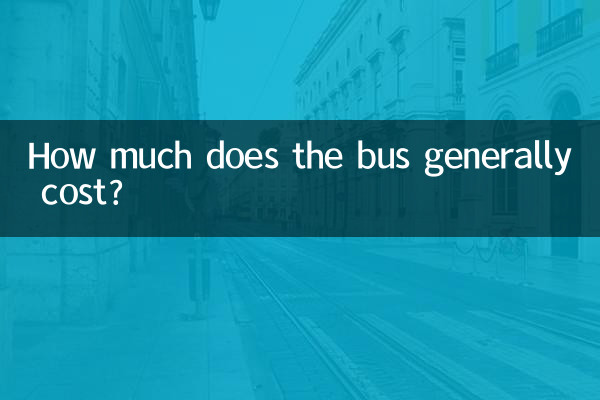How much does the bus generally cost?
Recently, the discussion about public transportation costs has become one of the hot topics, especially the issue of bus fares. This article will combine the hot content of the entire network in the past 10 days to provide you with a detailed analysis of the fare structure of buses, price comparisons in various places, and influencing factors, and provide structured data for reference.
1. Basic composition of bus fares

Bus fares are usually determined by the following factors:
| factors | Description |
|---|---|
| base fare | Generally, it is a fixed starting price, mostly between 1-3 yuan. |
| Mileage pricing | Some cities charge based on mileage. |
| Air conditioning surcharge | A surcharge of 0.5-1 yuan may be charged in summer or winter |
| Discounted fares | Special groups such as students and the elderly can enjoy discounts |
2. Comparison of bus fares in major cities across the country
Based on the latest data, we have compiled the bus fares in some cities:
| city | Ordinary fare (yuan) | Discounted fare (yuan) | Payment method |
|---|---|---|---|
| Beijing | 2 | 1(student)/free(elderly) | Bus card/QR code |
| Shanghai | 2 | 1 | Transportation card/mobile payment |
| Guangzhou | 2 | 1 | Yangchengtong/QR code |
| Shenzhen | 2-3 | 1.5-2 | Shenzhen Tong/Mobile Payment |
| Chengdu | 2 | 1 | Tianfutong/QR code |
| Wuhan | 2 | 1 | Wuhan Pass/Mobile Payment |
3. Factors affecting bus fares
1.urban economic development level: Ticket prices in economically developed areas are relatively high
2.Government subsidies: Cities with more subsidies have lower fares
3.operating costs:Including fuel, labor, vehicle maintenance, etc.
4.Line type: Price difference between regular lines and bus rapid transit (BRT)
5.Payment method: Discounts may be available for electronic payments
4. Recent hot discussions
1.Fare adjustment dispute: Some cities plan to raise fares, triggering heated discussions
2.Free ride policy: Many places have launched free ride policies for the elderly and military personnel
3.Electronic payment offers: Alipay and WeChat Pay launch ride discounts
4.Environmentally friendly car cost: Should new energy bus fares be increased?
5.Cross-city bus development: Inter-city bus price system in the Yangtze River Delta and Pearl River Delta regions
5. Forecast of future trends
1.Differentiated pricing: Different prices may be implemented according to peak/off-peak hours
2.Dynamic price adjustment mechanism: Flexible adjustment according to changes in operating costs
3.Diversified payment: NFC, face recognition and other new technology applications
4.Preferential policies extended: Special group discounts may be maintained for a long time
5.regional integration: Convergence of bus fares within urban agglomerations
6. How to save bus fares
| method | Description | Estimated savings |
|---|---|---|
| Apply for a bus card | Most city bus cards enjoy a 10-10% discount | 10-20%/month |
| Use electronic payment | Alipay/WeChat often have promotions | 5-15%/time |
| Buy a monthly pass | Some cities offer unlimited monthly passes | 30-50%/month |
| Travel during peak hours | Avoid peak times and you may get discounts | depending on the circumstances |
To sum up, bus fares are affected by many factors. The basic fares in major cities across the country are mostly around 2 yuan. By rationally choosing payment methods and taking advantage of preferential policies, travel costs can be effectively reduced. In the future, with technological advancement and policy adjustments, the bus fare system will become more intelligent and user-friendly.

check the details

check the details